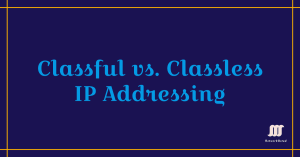Classful vs. Classless IP Addressing: A Deep Dive into Networking Evolution
IP addressing is the backbone of modern networking, enabling devices to communicate across local networks and the internet. Every device—whether a smartphone, server, or IoT sensor—requires a unique IP address to send and receive data. However, the original IP addressing system ( classful addressing ) struggled to scale with the internet’s explosive growth. This led […]

